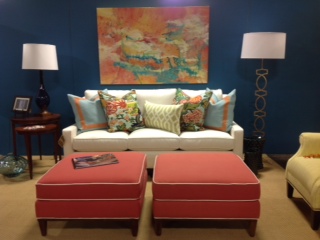
OK, you are ready to admit that the sofa that has survived years of kids, pets, and overnight guests is looking a bit haggard. If it was a quality piece to begin with, it is probably time to consider new upholstery fabric.
Selecting the right textile requires far more than just picking a pattern that suits your taste.
A while back I was shown a fabric that a client had hoped to use to recover her sofa. The fabric was purchased from a bolt at a local fabric store. It met her requirement for color and pattern but she wanted my blessing before moving forward.
Without saying a word, I took her swatch and with just a few scrapes of a fingernail, I was able to dig a hole in the fabric.
Needless to say, this was not a textile suitable for upholstery usage. It might have worked for a drapery application but it would have been a complete disaster had she moved forward with this for an upholstery application.
First and foremost, fabrics have to withstand the lifestyle of those who live in the home. They are typically made of durable fibers, are tightly woven, and often backed with latex for stability.
The durability of an upholstery candidate is indicated by a “double rub factor.” This is also referred to as the Wyzenbeek factor which is a testing system that indicates the ability of a fabric to resist surface wear caused by the friction of rubbing with another surface (15,000 double rubs is considered the minimum for heavy duty upholstery usage).
Fiber blends tend to be some of the most desirable for upholstery use as the negative features of a fiber can be neutralized by the positive nature of another fiber. Linen tends to wrinkle when it stands alone but when blended with polyester, it is far more wrinkle resistant. Pure polyester can have a garish sheen while a bit of Cotten added to the mix can tone it down and create a beautiful textile blend.
Upholstery is intended for long term use so the pattern is important to consider. A floral or plaid can overwhelm a room and dictate the design direction for many years. A solid or texture will, typically, provide more flexibility over time. Accent pillows and smaller pieces of furniture tend to work well with heavy patterns as they can be easily changed as tastes change.
While there are dual use fabrics, upholstery grade textiles might work for hard window treatments such as cornice boards are often too heavy for normal drapery application. Ideal drapery fabrics require a level of “drapability.”
The drapability of a fabric is referred to as “the hand.” The hand simply means how the textile feels when touched and how it drapes over the hand when held.


